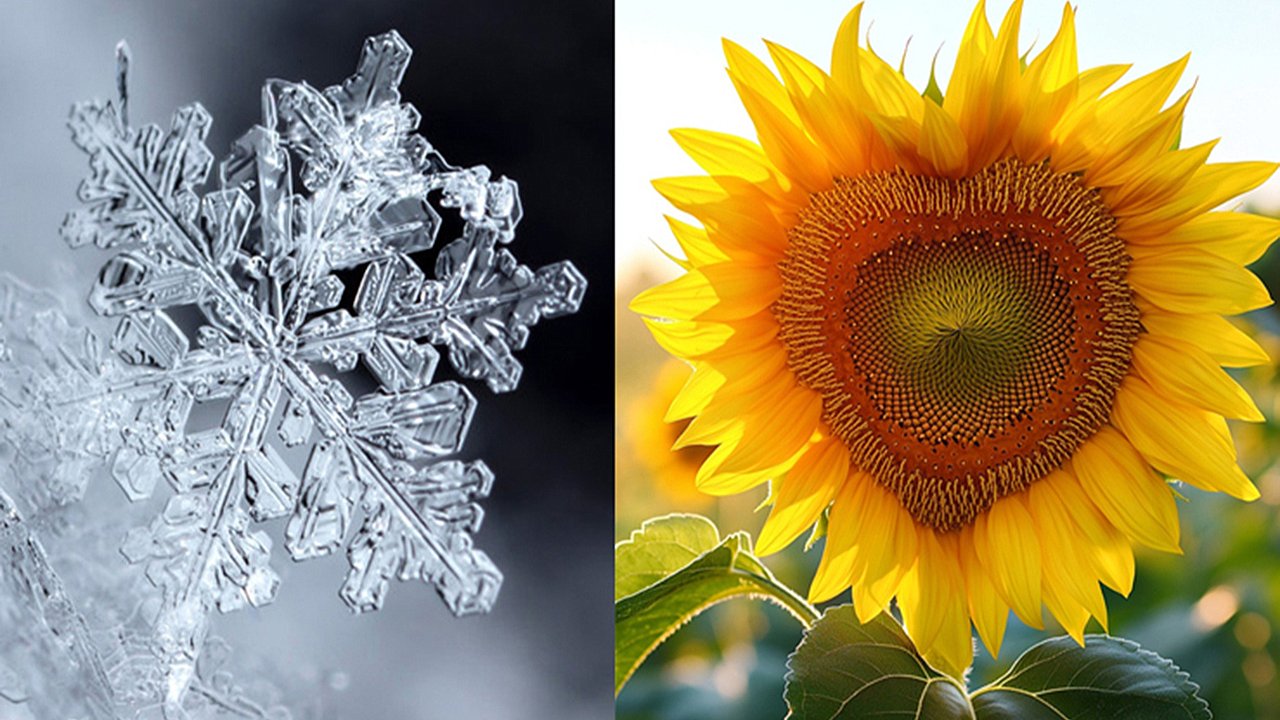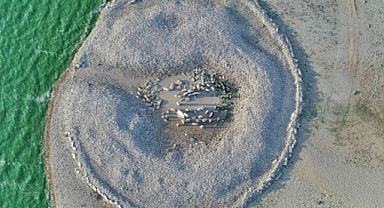Symmetry in Nature: A Showcase of Perfect Balance
Here are 12 remarkable examples of geometrical symmetry found in nature that will take your breath away:Nature's Perfect Geometry: 12 Stunning Examples of Symmetrical Beauty
Short Description:
Explore 12 breathtaking images of nature where geometrical symmetry takes center stage, showcasing the incredible precision and artistry of the natural world.Symmetry in Nature: A Showcase of Perfect Balance
Nature’s designs often leave us in awe, and its symmetrical patterns are no exception. From the spirals of a sunflower to the intricate wings of a butterfly, symmetry is a hallmark of the natural world. It’s a phenomenon that marries aesthetics with function, often contributing to survival and beauty in equal measure.Here are 12 remarkable examples of geometrical symmetry found in nature that will take your breath away:1. Sunflower Spirals
The seeds of a sunflower arrange themselves in perfect spirals, following the Fibonacci sequence. This symmetrical pattern maximizes space efficiency and is a mathematical marvel. 2. Butterfly Wings
2. Butterfly Wings
The wings of a butterfly are a prime example of bilateral symmetry. Each side mirrors the other, making them both functional for flight and visually captivating.3. Snowflakes
No two snowflakes are identical, but they all exhibit six-fold radial symmetry. This intricate design forms as water molecules freeze in hexagonal patterns. 4. Spiderwebs
4. Spiderwebs
Spiderwebs display radial symmetry that’s not only visually stunning but also highly effective for capturing prey.5. Honeycombs
Bees construct honeycombs in a near-perfect hexagonal grid, a structure that optimizes storage and minimizes material use.6. Nautilus Shells
The nautilus shell grows in a logarithmic spiral, maintaining its shape while increasing in size. This iconic form is a beautiful demonstration of natural symmetry.7. Pinecones
The scales of pinecones are arranged in spirals that follow the Fibonacci sequence, creating a harmonious balance of form and function.8. Peacock Feathers
The eye-like patterns on peacock feathers exhibit radial symmetry, which plays a key role in attracting mates.9. Leaves and Veins
Many leaves display bilateral symmetry, with their veins branching in precise, mirrored patterns that ensure efficient nutrient distribution. 10. Starfish
10. Starfish
Starfish boast five-fold radial symmetry, an arrangement that aids in their movement and regeneration.11. Crystals
The internal structure of crystals reflects perfect geometrical symmetry, as their atoms arrange themselves in orderly, repeating patterns.12. Roses in Bloom
Roses often spiral outward from their center, following a symmetrical Fibonacci sequence that enhances their aesthetic appeal.The Science Behind Symmetry
Symmetry in nature often arises from processes like evolution, physics, and chemistry. It optimizes function, ensures efficiency, and often plays a critical role in an organism's survival or reproduction. For humans, it also evokes a sense of beauty and harmony.Whether seen in the tiniest snowflake or the vast expanse of a sunflower field, these examples remind us of the intricate artistry embedded in our natural world.
Here are 12 remarkable examples of geometrical symmetry found in nature that will take your breath away:Nature's Perfect Geometry: 12 Stunning Examples of Symmetrical Beauty
Short Description:
Explore 12 breathtaking images of nature where geometrical symmetry takes center stage, showcasing the incredible precision and artistry of the natural world.Symmetry in Nature: A Showcase of Perfect Balance
Nature’s designs often leave us in awe, and its symmetrical patterns are no exception. From the spirals of a sunflower to the intricate wings of a butterfly, symmetry is a hallmark of the natural world. It’s a phenomenon that marries aesthetics with function, often contributing to survival and beauty in equal measure.Here are 12 remarkable examples of geometrical symmetry found in nature that will take your breath away:1. Sunflower Spirals
The seeds of a sunflower arrange themselves in perfect spirals, following the Fibonacci sequence. This symmetrical pattern maximizes space efficiency and is a mathematical marvel.
 2. Butterfly Wings
2. Butterfly WingsThe wings of a butterfly are a prime example of bilateral symmetry. Each side mirrors the other, making them both functional for flight and visually captivating.3. Snowflakes
No two snowflakes are identical, but they all exhibit six-fold radial symmetry. This intricate design forms as water molecules freeze in hexagonal patterns.
 4. Spiderwebs
4. SpiderwebsSpiderwebs display radial symmetry that’s not only visually stunning but also highly effective for capturing prey.5. Honeycombs
Bees construct honeycombs in a near-perfect hexagonal grid, a structure that optimizes storage and minimizes material use.6. Nautilus Shells
The nautilus shell grows in a logarithmic spiral, maintaining its shape while increasing in size. This iconic form is a beautiful demonstration of natural symmetry.7. Pinecones
The scales of pinecones are arranged in spirals that follow the Fibonacci sequence, creating a harmonious balance of form and function.8. Peacock Feathers
The eye-like patterns on peacock feathers exhibit radial symmetry, which plays a key role in attracting mates.9. Leaves and Veins
Many leaves display bilateral symmetry, with their veins branching in precise, mirrored patterns that ensure efficient nutrient distribution.
 10. Starfish
10. StarfishStarfish boast five-fold radial symmetry, an arrangement that aids in their movement and regeneration.11. Crystals
The internal structure of crystals reflects perfect geometrical symmetry, as their atoms arrange themselves in orderly, repeating patterns.12. Roses in Bloom
Roses often spiral outward from their center, following a symmetrical Fibonacci sequence that enhances their aesthetic appeal.The Science Behind Symmetry
Symmetry in nature often arises from processes like evolution, physics, and chemistry. It optimizes function, ensures efficiency, and often plays a critical role in an organism's survival or reproduction. For humans, it also evokes a sense of beauty and harmony.Whether seen in the tiniest snowflake or the vast expanse of a sunflower field, these examples remind us of the intricate artistry embedded in our natural world.







